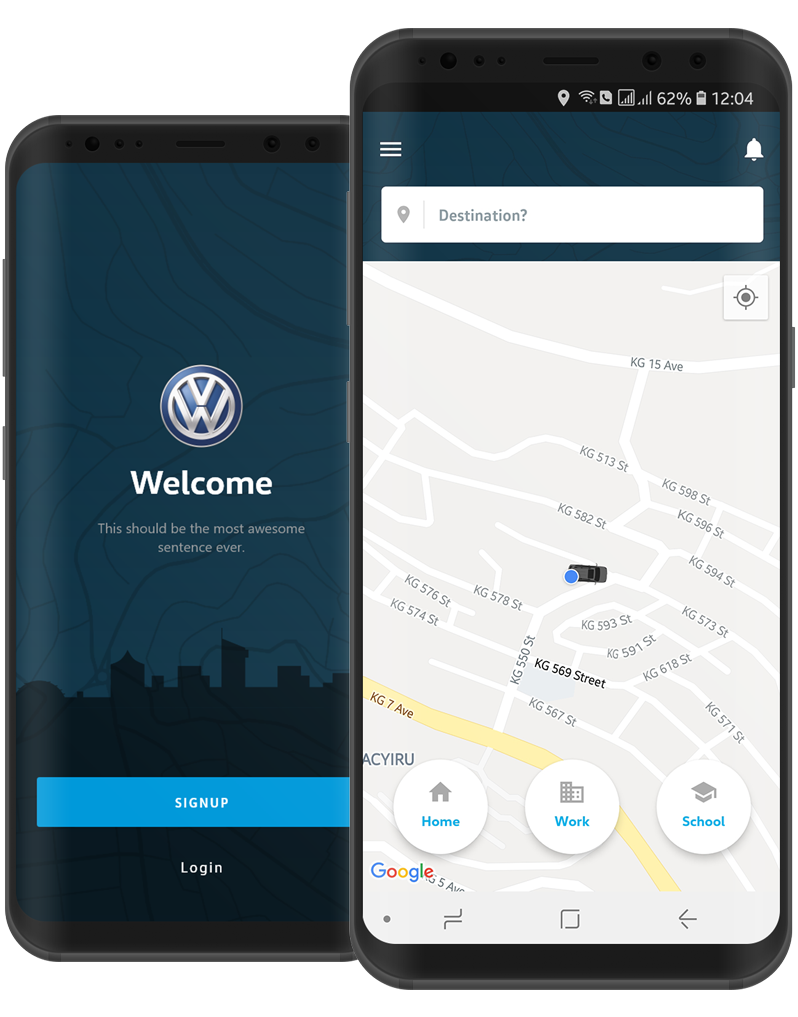Welcome to the third and last article of the series dedicated to smart mobility perspectives. Here’s a recap of what I covered and what I will address in this article:
- The African context and why investments are not always successful (first article);
- Suggestions to implement smart mobility solutions and why it may be successful (second article);
- Examples of innovative mobility services and future perspectives (third article).
Examples of smart mobility services
This section is purely informative and aims to provide a short overview of innovative mobility services that have been implemented recently in Africa.
- Mellowcabs: the South-African based start-up proposes a 100% electric 3-wheeler. This mobility operator aims to expand to India where tuk-tuk vehicles are popular.
- Kiira Motors: This state-owned vehicle manufacturer from Uganda exclusively builds EVs from small personal cars to buses. They launched the first Africa EV in 2011 and are now building upon their expertise and knowledge of the market.
- MOVE by VW Rwanda: ridehailing and carsharing program developed by VW in Rwanda

- Fika Mobility: The Nairobi based start-up offers to swap drained batteries with fully charged ones for electric two and three-wheelers.
- BuuPass: Smart public transport ticketing solution in Kenya. The difference with our solutions is the payment system aligned with their text/mobile habits.
Sometimes projects are not as successful as expected. The first South Africa’s electric bus service introduced in 2018 was a failure. The vehicle was not able to climb the hill areas with a gradient of 6.5% as it was originally designed to operate on slopes of 4% maximum 🤦♂️. The bus manufactured by the Chinese BYD is a concrete example of a lack of understanding and customization of mobility services to local African specificities.
In the future

What next for smart mobility in Africa? I see two opportunities: the electrification of mobility and the implementation of smart shared services.
Second life battery is for me the most promising future smart mobility opportunity for Africa
First, there is a shift in the mindset of Africans in Robertus’ view. Imported expensive and polluting cars become less attractive for local users due to climate change concerns. This transformation is reflected in new policy frameworks across the continent such as the recent push from the Economic Community of West African State (ECOWAS) to build a unified front to improve fuel consumption standards and vehicle emission limitations for used imported cars. This willingness to unify the efforts at the continent level is reflected, in Gopi’s point of view, with “the finally signed most awaited moment in the history of the continent, the “AICFTA” Africa Inter-Continental Free Trade Agreement. The goal is to establish a single market for goods and services across 54 countries, allow the free movement of business travellers and investments, and create a continental customs union to streamline trade – and attract long-term investment.”
Africa should not be a dumping ground with old ICE vehicles and incentives to drive an intra-continent EV market should be implemented
We should also be concerned with vehicle carbon emissions in our countries and as Hiten mentions, “Africa should not be a ‘dumping ground’ because of the new western policy framework” [i.e. ban of ICE vehicles]. The traditional influx of used ICE cars (1.2 million vehicles were imported in 2017 according to the UN) should be addressed. One of the possible solutions is suggested by Hiten with the creation of “incentives to import hybrids and EV’s over the used ICE’s. Even better would be to leap-frog and utilise locally minerals and manufacture EVs in Africa – specifically built for Africa”. Nonetheless, the positive impact from the pace at which we adopt EV will not only influence our environment but also indirectly the one of Africa when our EVs will also be recycled locally. The more we wait, the longer it will certainly take to electrify African mobility, even with a local initiative to create an intra-continent market. In Robertus’ view, we have a window of 5-6 years “to change our mobility here [developed countries] that will roll out to Africa positively or negatively, depending on how we move.”
We have a window of 5-6 years to change our mobility in developed countries that will roll out positively or negatively to Africa. So let’s act now!
What about the required infrastructure and the battery challenge. On the one hand, Driss Sefrioui, Partner at AltRaise, reminds us of the significant work still to be performed in terms of charging points in Africa and the limited hope for a big change shortly. However, he also stresses how agile Africa has been to adapt quickly to cleaner and more cost-effective energies such as LPG in Ghana. On the other hand, he sees an interesting opportunity for the continent in the vehicle second life battery industry.
Africa could be a global leader in the second life battery industry. Here is my analysis…

Here is why I think Africa could be the leader to recycle EV batteries once the market is more mature:
- A used battery still has 70% of its capacity. If the traditional cycle of sending used vehicles to Africa remains, the continent will concentrate a significant proportion of the globally used batteries. The limited shipment required, the large space available for storage and the well-developed ability Africans have to recycle and reuse everything around them might provide the region with a strong competitive advantage;
- The second life battery is a perfect fit for African decentralized economies. As already mentioned, the vibrant rural economies and the mini electric grids empowered by innovative decentralized power plants (solar, wind, water) can absorb the supply of recycled EV batteries. Together with V2G, it could help Africa to significantly improve its general electrification. The leftover batteries could be sent back to other countries.
- My research leads me to believe that China, once again, is doing the groundwork to dominate this future market (have a look at what China Tower does…). Simple question for you: do we want that? The COVID19 shows that concentrate the supply chain and be dependent on only one region in the world create chaos when there’s a global disruption. Perhaps we could allow Africa to shine with the EV batteries…
An innovative company active in this sector to look at is Revov (South Africa).
To conclude on this point, Gary Vermaak, Project Developer at Harambe, sees strong traction from the continent to major car manufacturers: “The key to any transition is providing a safe easy to implement battery charging and battery swap-out infrastructure, together with affordable electric minibuses, delivery, utility and private vehicles, using standardized batteries. This presents opportunities for large automotive industry players like BYD and Toyota to supply such vehicles across the continent.”
Second, Peter recalls us that our smart platform on which shared mobility depends on works on centralized models whereas in Africa it has to be more decentralized. We need to build models on a distributed approach. Therefore, when it comes to smart mobility services, he says, developing rural mobility services might be one of the best ideas to develop in Africa. This topic should be further explored and I have nothing more to share at this point. If you have more information and thoughts to share, feel free to email me!
To conclude this article and series, I could not agree more than with Robertus who told me “the boom is still ahead of us” and I am personally very excited to follow this evolution.
Thank you again to the fantastic experts who shared valuable insights for these articles:
- Driss Sefrioui, Partner at AltRaise;
- Gary Vermaak, Project Developer at Harambe;
- Gopi Krishna Reddy, CEO Afro International Technology For Societal Transformation Foundation
- Hiten Parmar, Director at the National uYilo eMobility Programme (South Africa);
- Peter Pedrick, MD of Electrical Conformance Board and CEO of Framework Africa;
- Rob De Jong, Head of the Air Quality and Mobility Unit at the United Nations Environment Programme.
Please let me know if you want me to dig deeper into a specific topic that I have (not) covered in this series and as always, share your opinion and engage with me 😊!
Please note the following limitation: I am mindful that it is presumptuous to conclude what is true for a part of Africa is true for the entire continent but I have to start somewhere and I’ll try to bring more granularity in my next series!
About Me
Frederic is a Consultant at Neckermann Strategic Advisors. He holds an MBA from Imperial College London Business School and a Master’s Degree in Business Engineering from UMons. He supports companies in understanding how the Mobility Revolution will change their business. Frederic is the co-author of multiple smart mobility research reports and one of the contributors to the Global New Mobility Coalition led by the World Economic Forum. He is also a mobility guest lecturer at Universities, a blogger @ Frederic-john.com and mentors mobility start-ups in London and Singapore. He is fluent in French and English and also speaks some Spanish and Dutch.
The views expressed in this article are personal and do not represent the opinion of my employer or any other parties I am involved with. The suggested insights come from my discussions, research and analyses.

